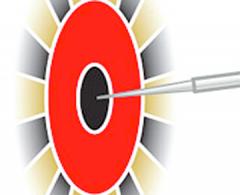
This Article From Issue
September-October 2010
Volume 98, Number 5
Page 365
DOI: 10.1511/2010.86.365
To the Editors:
I was quite pleased to learn from the Science Observer article “Getting a Fix on Pollen Folding” (July–August) that the biophysics of pollen coat folding under desiccation is being systematically explored. Plant physiologists, such as the late Paul Green, have long proposed that forces such as hydraulic expansion or desiccation stresses are major morphogenic factors in plant development. The brief article, however, requires some clarification.
The article says the outer layers of pollen fold “to keep the genetic material inside safe.” That is true, but besides sounding teleological, it is tantamount to saying that when I put on a coat to go outside it keeps my genetic material safe. More specifically, the infolding of a pollen colpus protects a tiny male plant, a microgametophyte, from dessication when it is reaching its equivalence of adolescence. It is worth noting that sporopollenin, a major chemical component of the outer pollen wall, is perhaps the most durable biological material on Earth.
The article also states that lily pollen has one elongated aperture through which sperm cells exit. But sperm cells do not exit through the colpus of a lily pollen grain. An extension of one of the cells of the tiny body of the nearly adult microgametophyte, the tube cell, emerges through the aperture. This becomes a “pollen tube.” No sperm are present at that time. The pollen tube elongates and conducts cytoplasm, the tube-cell nucleus, and the nucleus of an adjacent cell, the generative cell, down through the tissues of the stigma and style of the target flower. It is during that trip that the microgametophyte becomes mature and the nucleus of the generative cell undergoes mitosis to produce two sperm nuclei.
Daniel Gladish
Miami University

American Scientist Comments and Discussion
To discuss our articles or comment on them, please share them and tag American Scientist on social media platforms. Here are links to our profiles on Twitter, Facebook, and LinkedIn.
If we re-share your post, we will moderate comments/discussion following our comments policy.